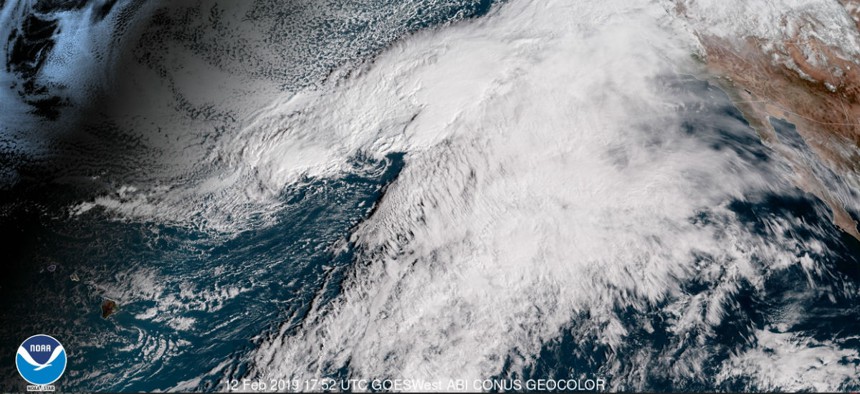Next-Gen Weather Satellite Operational Over Western U.S.

A GeoColor image taken by GOES-17 on Feb. 12. NOAA
GOES-17 is operational and monitoring weather in the Pacific and western United States.
After months of uncertainty over software and hardware glitches, the second of the U.S. government’s $11 billion next-generation geostationary weather satellites was declared operational Tuesday.
Named GOES-17, the satellite—orbiting 22,300 miles above the western United States and Pacific Ocean—is now providing National Weather Service huge swaths of data expected to improve forecasts of hurricanes, storm systems, wildfires and other environmental dangers.
“GOES-17 is the latest in a series of the most advanced weather satellites which have ever been launched into orbit,” said Secretary of Commerce Wilbur Ross, in a statement. “The latest GOES series of satellites play a critical role protecting the public each day, ensuring better data reaches the forecasters who safeguard countless American lives from weather-related disaster.”
The National Oceanic and Atmospheric Administration’s geostationary satellite fleets work in tandem, with one satellite monitoring the West Coast and another—GOES 16—covering the East Coast. Officials initially intended for GOES-17 to replace the aging GOES-15 satellite that had been monitoring the West Coast since 2011, but NOAA opted to operate both GOES-15 and GOES-17 simultaneously until July 2019 due to technical issues that plagued GOES-17 after its launch. Stephen Volz, director of NOAA’s Satellite and Information Service, said he expects the satellite to “deliver more than 97 percent of the data it was designed to provide.”
NOAA officials also announced the first spacecraft in its Joint Polar Satellite System, NOAA-20, is operating as its primary polar satellite, measuring the world’s atmosphere, land and water round-the-clock.
“NOAA now has both types of advanced satellites—geostationary and polar-orbiting—in operation. We’re continuing to deploy and leverage the latest technology to improve observations that help us achieve the goals of the Weather Research and Forecasting Innovation Act,” said Neil Jacobs, NOAA’s assistant secretary of commerce for environmental observation and prediction, in a statement.
NEXT STORY: GSA, NGA Expand Space-Based Data Offerings



